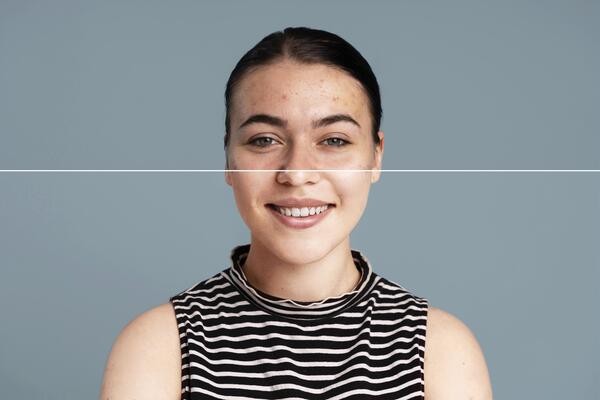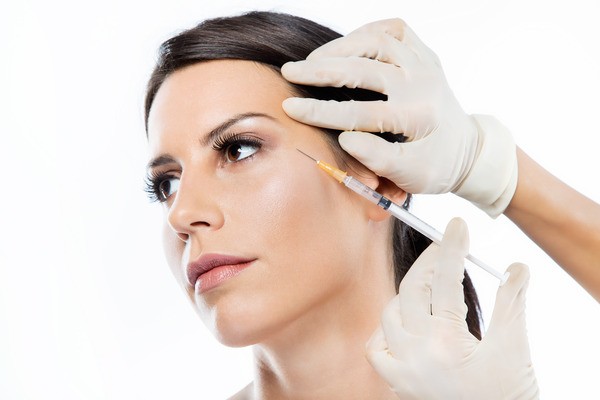
Top 5 Anti-Pigmentation Treatments Recommended By Experts
If pigmentation feels like that one uninvited guest that just won’t leave, you’re not alone. As skin experts at Dr. V.S. Rathore’s clinic, we meet people like you every day. People who’ve done everything they could—but pigmentation still shows up, quietly wrecking their confidence.
Let’s talk. Let’s understand what works, what’s worth avoiding, and how professionals actually treat pigmentation today—genuinely and effectively.
But First, What Is Pigmentation?
In simple words? It occurs when the natural pigment that gives your skin its color, melanin, is produced in excess. And that "too much" frequently manifests as:
- Brown patches
- Freckles
- Age spots
- Sun spots
- Melasma
- Post-inflammatory marks (like after acne)
Sometimes it’s hormonal. Sometimes it’s sun exposure. Sometimes it’s just your skin’s reaction to trauma. The point is: pigmentation doesn’t just fade with fairness creams.
And no—it’s not your fault. Your skin isn’t the problem. The real issue? Wrong treatment choices and no expert guidance.
Let’s fix that.
1. Laser Toning – When You Want Precision, Not Promises
Let’s start strong.
You may have heard of laser facials, but laser toning is on another level. Think of it like a highly-trained sniper—only it targets melanin clusters, not your enemies.
Here’s how it works:
- We use Q-switched Nd:YAG lasers
- The light energy breaks down deep pigmentation
- Your skin’s natural healing takes over
- It fades spots gradually and evenly
What’s it great for?
- Deep melasma
- Stubborn acne marks
- Uneven tone on cheeks or forehead
Real talk:
It’s painless, non-invasive, and works best in multiple sessions. And no, you won’t look like a tomato afterward. There’s zero downtime.
Why we recommend it:
Because it’s safe. Effective. And controlled by trained hands. No bleaching. No guessing. Just clear results.
2. Chemical Peels – When You Want Your Skin to Hit ‘Refresh’
You may think peels sound scary. Acid on your face? No thanks.
But done right—by dermatologists, not salons—chemical peels are one of the most effective anti-pigmentation treatments today.
At Dr. V.S. Rathore’s clinic, we use mild fruit-acid-based peels like glycolic, salicylic, or lactic acids.
What do they do?
- Gently remove dead, pigmented skin layers
- Speed up cell turnover
- Reveal clearer, smoother skin underneath
Who should consider it?
Peels give your skin that glass-skin sheen if it appears lifeless, sagging, or uneven.
And yes—it works brilliantly for:
- Acne scars
- Tan patches
- Early melasma
What’s it like?
You’ll feel a mild tingling for 5–10 minutes. That’s it. No peeling like a snake. No horror stories. Just brighter, better skin every week.
Related Content:
■ Chemical Peels For Hyperpigmentation: Everything You Need To Know
3. Microdermabrasion – When You Want That 'Polished' Look
This is one of those underrated treatments that clients love after they try it.
Think of microdermabrasion as a skin polishing treatment. A gentle device exfoliates the top layer of your skin using tiny crystals.
Why does it help with pigmentation?
Because it:
- Removes sun-damaged skin
- Boosts collagen
- Lightens superficial marks
Best for:
- Mild pigmentation
- Tanning
- Uneven skin tone due to pollution or stress
We usually recommend it as part of a combined pigmentation plan, along with peels or lasers.
Bonus: Your skin feels instantly smooth. And your makeup? Glides like butter.
4. Dermal Infusion Therapy – When You Want to Feed Your Skin What It Really Needs
Ever felt like your creams don’t do anything?
That’s because most products barely go beyond the surface. But in dermal infusion therapy, we deliver active ingredients straight into your skin, using a painless infusion device.
It’s a 3-in-1 process:
- Exfoliation
- Extraction
- Serum delivery
And it’s customized. That means:
- Brightening serums for pigmentation
- Antioxidants for sun damage
- Hydration boosters for dry, dull skin
Who is it for?
If you’re tired of topical products that promise but don’t perform, this treatment helps feed your skin directly.
Most clients notice improvement in just one session. And the glow? Oh, you’ll see it.
5. Prescription-Based Skin Lightening – When You Want Expert-Led Daily Care
Now, not every pigmentation needs machines or peels. Sometimes, it just needs the right skincare plan.
We thoroughly examine your skin type, history, and triggers at our clinic. Then we create a personalized routine with prescription-grade ingredients like:
- Hydroquinone (in controlled doses)
- Kojic acid
- Azelaic acid
- Retinoids
- Niacinamide
The trick? Not to overdo it.
We guide you through every step—no harsh reactions, no peeling disasters.
And yes—our plans include:
- Proper sunscreen (non-negotiable)
- Barrier repair (to avoid dryness)
- Follow-ups (because skincare evolves)
What Makes Our Approach Different?
We don’t just throw treatments at your face and hope something sticks.
We listen to your skin’s story. Then we build a plan that respects your skin barrier, lifestyle, and concerns.
Think of it like this:
Your pigmentation isn’t just a mark. Your body, hormones, or previous sunburns or breakouts are all sending you a message. Our job? Decode it. Treat it. And guide you to clear skin—without shortcuts.
Still Wondering Which One Is Right for You?
Don’t guess.
Let your skin be seen—by people who know what to look for. At Dr. V.S. Rathore’s clinic, we don’t just treat skin. We treat people.
We explain every step. We adjust your plan. We make sure you understand what’s happening. And most importantly—we work with you till the pigmentation fades, your skin heals, and your confidence returns.
Quick FAQ You Might Be Thinking:
Q: Are these treatments painful?
A: Not at all. Most feel like warm massages or mild tingling.
Q: How many sessions do I need?
A: Depends on the type of pigmentation—but usually, a visible difference starts from session 2 or 3.
Q: Will the pigmentation come back?
A: Not if you follow post-care, wear sunscreen, and avoid known triggers.
Q: Is it safe for sensitive skin?
A: Absolutely. Every treatment is customized. Targeted care is applied gently to sensitive skin.
Final Thought: Don’t Just Cover the Spots—Clear Them
Pigmentation isn’t permanent. But it does require patience and professional care.
Skip the guesswork. Stop layering more creams. Start with a consult. Let’s sit down. Let’s build a plan that actually works for your skin.
Your skin deserves more than filters. It deserves expert-led clarity.
Read More: Anti-Pigmentation Treatments In 2025: What’s New & Trending?






